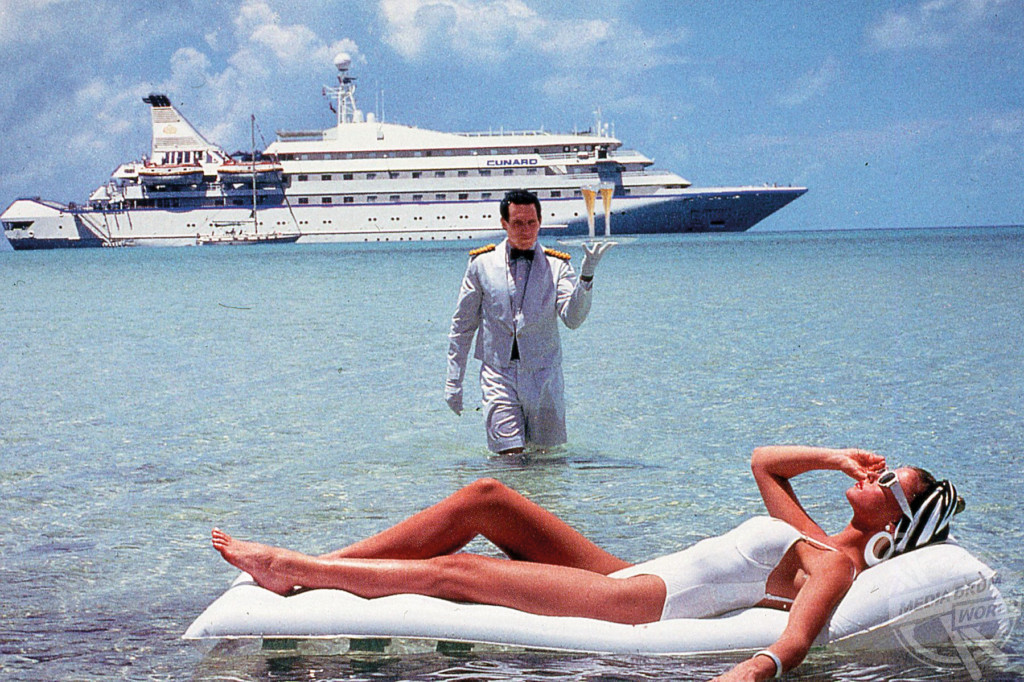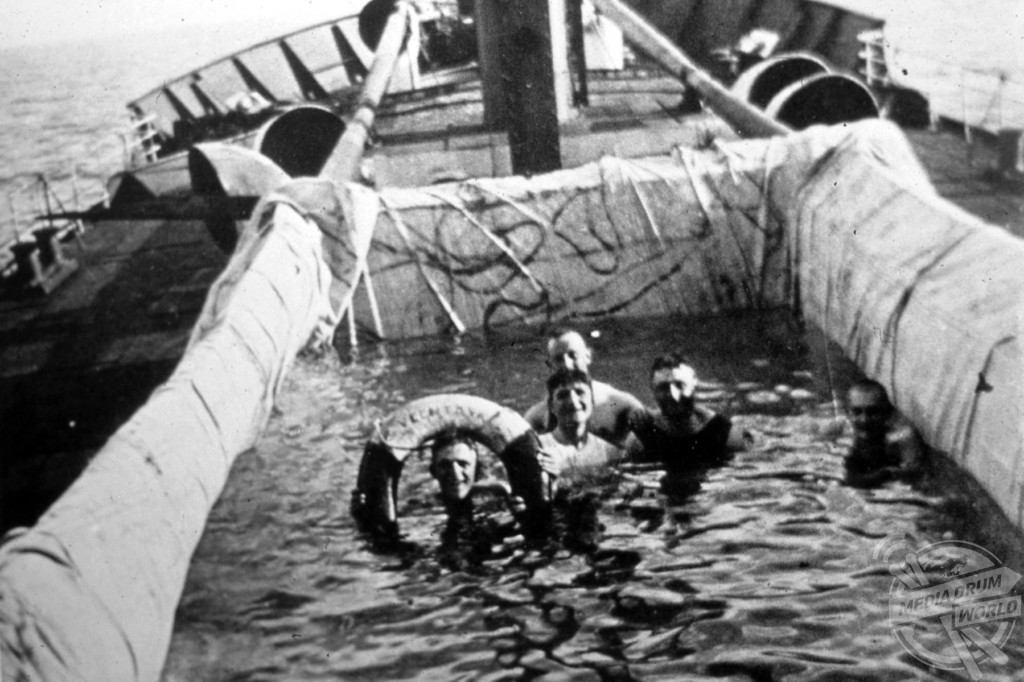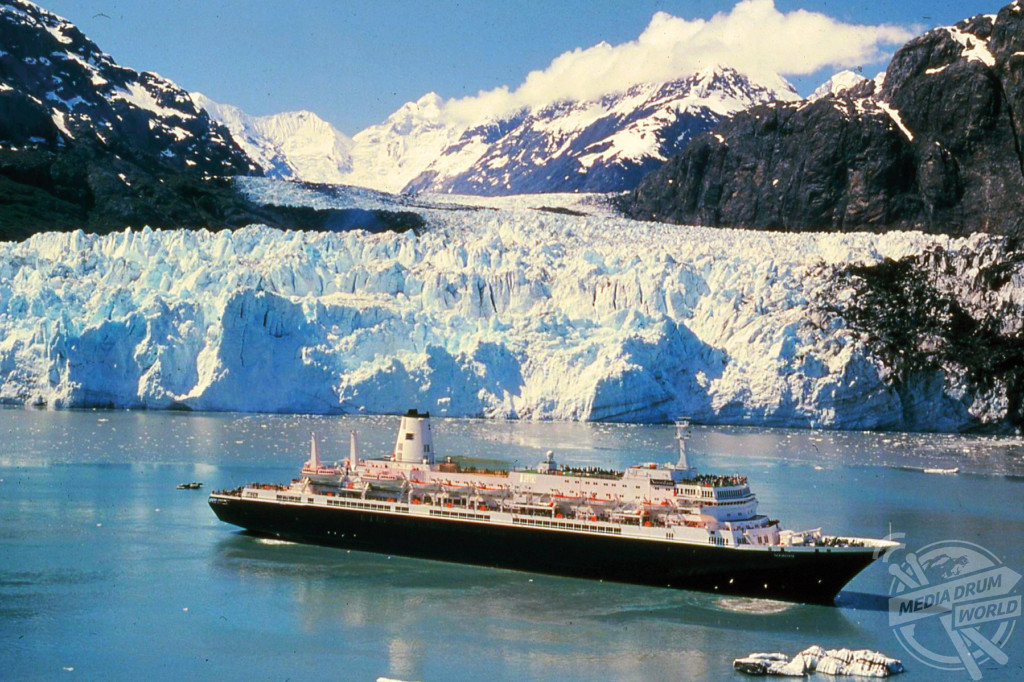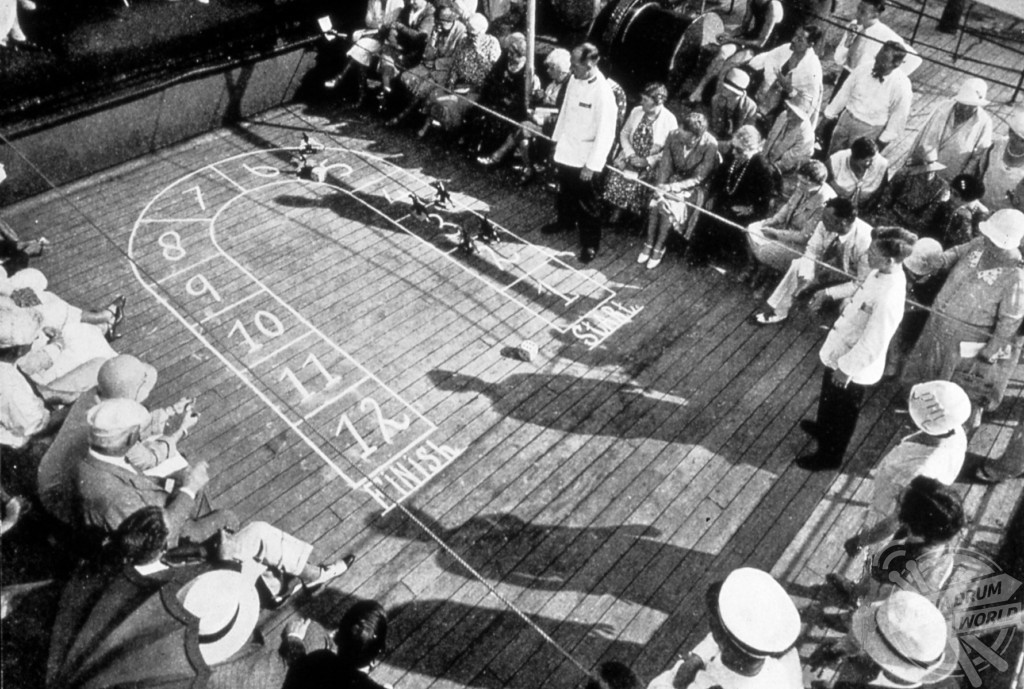
By Mark McConville
THE ORIGINS of the cruise ship industry and the public’s love affair with it has been revealed in a new book.
Incredible images featured in the book show P&O’s Ceylon which is said to be the first ever cruise, men and women relaxing on deck during an afternoon sailing to the Mediterranean onboard a Hamburg-America Line ship and passengers lying in specially erected canvas tanks filled with sea water before fitted swimming pools became common features.

specially erected canvas tanks filled with sea water. Mediadrumimages / William H Miller
Other stunning shots show a passenger being carried to shore on the shoulders of four men in an exotic port, deck games on the mighty Berengaria and a couple squeezed into a small cabin, which was designed that way in an effort to get passengers to come out, participate and spend money while on board.
The remarkable photographs are showcased in William H Miller’s new book, Sailing to the Sun: Cruising History and Evolution, which is published by Fonthill Media.

“A “luxury liner” is most easily defined as a big or major passenger ship,” writes Miller.
“Certainly the term conjures up an image, often romanticized, of a stately moving object of size and speed, mightily ‘ripping’ through the seas and, in times long past, capped by as many as three or even four smokestacks.
“Beginning in the late nineteenth century, these great ships—“the floating palaces” as they were often called— moved gracefully across the oceans and between the continents. Their purpose was to move passengers from one point on the globe to another.
“Yet there was another type of luxury liner: the luxury cruise ship. These vessels were sent not on line voyages, but on pleasure cruises, carrying passengers who were more interested in the delights of a sea voyage than travelling to a specific destination. These voyages were not simply destination oriented. Instead, ports of call were diversions—simply additions to the schedule of daily activities.

(Cunard Line). Mediadrumimages / William H Miller
“Today, cruising is almost the complete mainstay of the luxury liner business. Even the Queen Mary 2, which still offers transatlantic crossings, is run more like a cruise ship than one of those traditional, class-divided steamers of the past. Today, it is mostly aircraft that move travellers from point “A” to point “B.”
“The very first cruise was said to have been offered to the public in 1858. It was a sightseeing voyage of sorts to the antiquities of the then rather remote Mediterranean. A British ship, the Ceylon, owned by the illustriously historic Peninsular & Oriental Steam Navigation Company, known as the P&O, was employed for this voyage.
“But it was all rather primitive, long before air-conditioned staterooms, lido decks with oval-shaped swimming pools, top-deck zip lines, robotic bartenders, and even the luxury of comfortable tour buses on shore to ferry passengers to all those temples and treasures. Indeed, the Ceylon’s passengers were adventurers, filled with the spirit of exploring, and certainly well-heeled.”

According to Miller the first cruise for the public could have taken place even earlier, except there was a severe lack of interest from the majority of people.
“Earlier, in 1815, an advertisement was run in an Edinburgh newspaper calling for “tourists” and proposing a “cruise” to the remote Faeroe Islands north of Scotland and onwards as far as even more remote Iceland,” adds Miller.
“It was actually far too adventurous for most people of the time, and so the voyage never quite set off.
“Following the Ceylon’s inaugural pleasure jaunt, cruises remained rather intermittent. They were daring journeys, still restricted primarily to adventurous souls or, as one advertisement called them, “the educational and scientific oriented travellers.”






